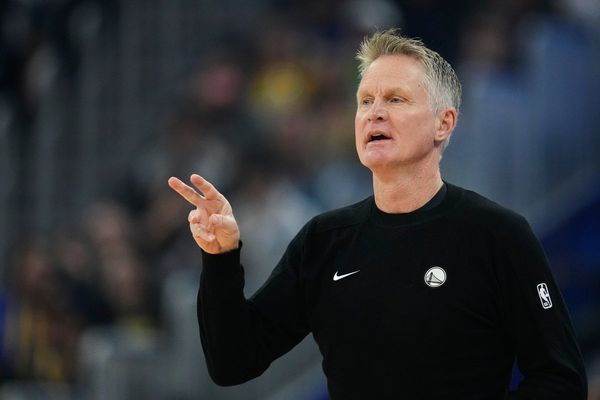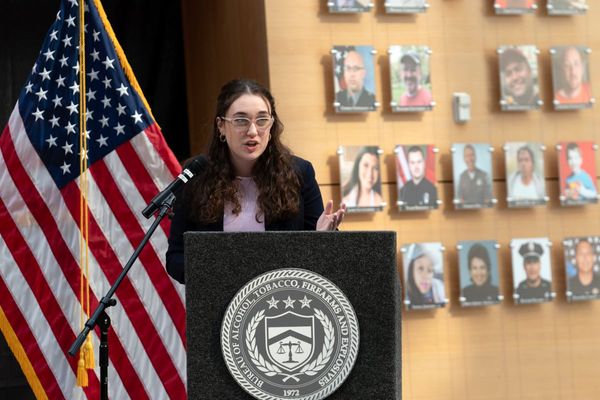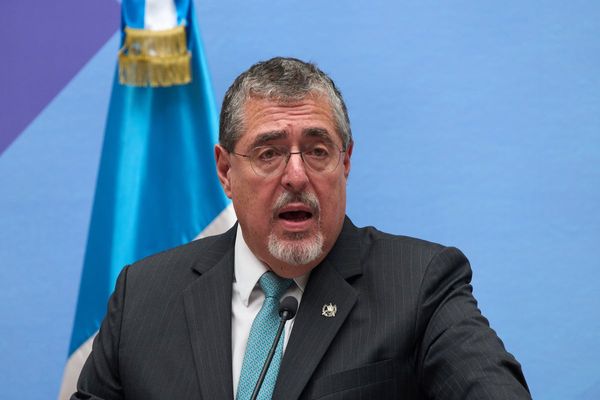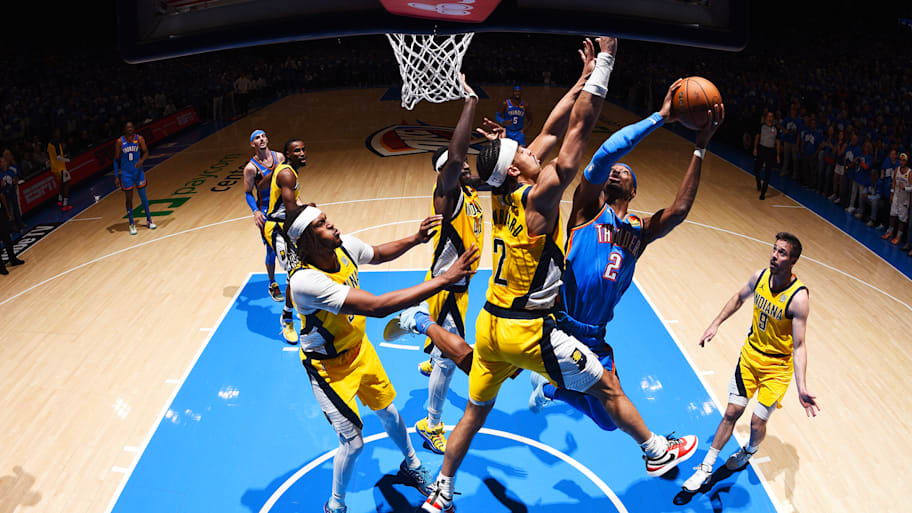
Last month, as the confetti fell from the rafters inside Paycom Center, the two men most responsible for Oklahoma City’s first NBA title shared a long embrace. Sam Presti, the bespectacled executive hell-bent on building a champion in one of the league’s smallest markets. And Shai Gilgeous-Alexander, the young star on whom he bet everything to win it. The road had obstacles: double-digit losing streaks, 20-ish win seasons, talking heads screaming for Presti to deal away Gilgeous-Alexander. They battled from 22 wins their second year together to 68 this season, from the lottery to a championship. As the celebration around them picked up steam, the two hugged and acknowledged the journey. “We both just said, ‘We made it to the mountaintop,’ ” Gilgeous-Alexander says. “We earned it.”
It has been nearly a decade since Presti stared down uncertainty, back when Kevin Durant defected to Golden State, leaving Oklahoma City to face a dark future. He tried to win with Russell Westbrook (didn’t work), then with Westbrook and Paul George (ditto) before tearing the Thunder roster down to the jerseys in 2019. Seven years after cobbling together one of the NBA’s most improbable Finals teams (one that lost to the Big Three Heat in five games), Presti faced the daunting task of trying to do it all over again.
In his first three years as GM, Presti drafted Durant, Westbrook and James Harden, who became the cornerstones of Oklahoma City’s failed dynasty. In the four years after it officially crumbled, Presti acquired Gilgeous-Alexander and drafted Chet Holmgren and Jalen Williams, the trio that has formed the foundation of this one. In all, nine of the 14 players on the Thunder’s Finals roster began their careers in Oklahoma City. The team developed, slowly, patiently, adding pieces that fit the vision (Alex Caruso, Isaiah Hartenstein), subtracting those (Josh Giddey, Darius Bazley) that didn’t.
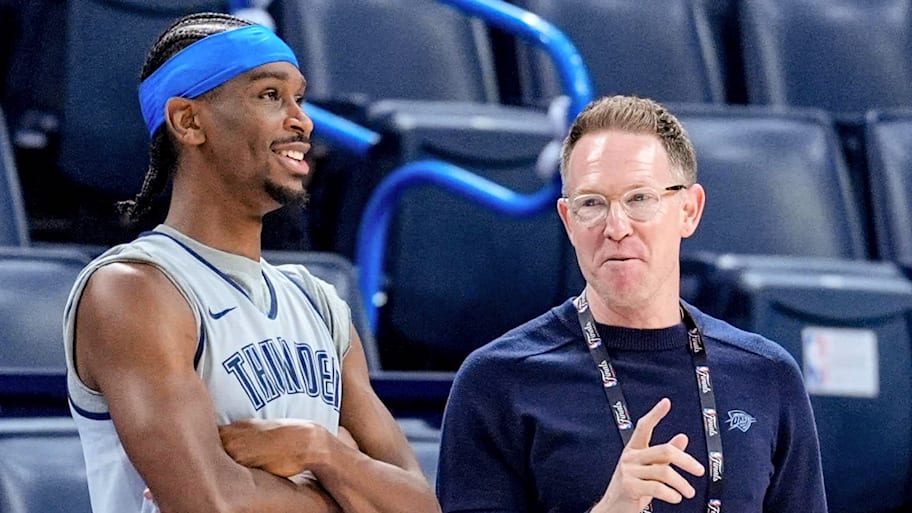
What came from it, says coach Mark Daigneault, is “an uncommon team,” deeply talented, deeply connected and, not surprisingly, overwhelmingly successful. Only two teams—the 2015–16 Warriors and 1995–96 Bulls—have finished a season with more total wins than the Thunder. Those teams defined those eras. Oklahoma City hopes it can define this one.
The NBA has achieved unprecedented parity. For the seventh consecutive season, the league crowned a new champion. No team has played in back-to-back Finals during that stretch. Winners have been from big markets (Golden State, Boston) and small (Milwaukee, Denver), with stars from Serbia (Nikola Jokic), Greece (Giannis Antetokounmpo) and Canada (Gilgeous-Alexander). Former NBA commissioner David Stern once snickered that his job was to shuttle between Boston and Los Angeles to hand out trophies. Adam Silver is spending most of his Junes in middle America.
Stern, who died in 2020, would have loved it. In 2011, determined to whittle down the players’ share of basketball-related income and put in a more restrictive salary cap, Stern locked the players out, forcing a 161-day work stoppage. The NBA, Stern said at the time, needed a structure that “30 teams, if well-managed, have an opportunity both to compete and to make a profit.” The league lost 240 games from the ’11–12 season. It gained a collective bargaining agreement that put it on a path to parity. After 14 years, two more CBAs, a commissioner change (Silver, a longtime deputy commissioner, succeeded Stern in 2014) and a cap spike, it has reached the end of it.
“The goal is that market size essentially becomes irrelevant,” Silver says. “The goal isn’t necessarily to have a different champion every year. It’s to have parity of opportunity.” Who wins the title, Silver insisted before the Finals, is irrelevant. “Whichever team were to win, if they were to repeat, I wouldn’t then be saying, ‘This, therefore, isn’t working because I didn’t go to a different city to hand out the trophy,’ ” Silver says. “I’d be saying, ‘That’s the system we wanted to create, as long as there’s a level playing field.’ ”
Good, because Silver may be spending a lot more time in Bricktown. Gilgeous-Alexander, the reigning MVP, is 27. Williams is 24 and coming off his first All-NBA season. Holmgren is 23. Organic improvement alone should make the Thunder better than the team that went 16–7 in the playoffs. “That’s the fun part of this,” Gilgeous-Alexander says. “So many of us can still get better. There’s not very many of us on the team that are in our prime or even close to it.”
Skeptics will claim it’s a recycled narrative. Milwaukee, led by the then 26-year-old Antetokounmpo, was supposed to go on a run after winning the 2021 Finals. The Bucks have made three consecutive first-round exits. Denver have a three-time MVP and a cast of 20-somethings around him. They haven’t been back to the conference finals. Before Jayson Tatum’s playoff Achilles injury, Boston had a roster ready to rip off multiple championships. Now, he’s likely to miss most of next season, and the Celtics are expected to shed salary and reboot.
In short: Nothing is certain. But Oklahoma City appears uniquely equipped to succeed. In Milwaukee, the Bucks wheeled and dealed to acquire championship-level talent around Antetokounmpo, surrendering loads of draft capital (including two first-rounders and two swaps to acquire Jrue Holiday in 2020) to do it. That left Milwaukee limited in its ability to refresh its roster with younger—and cheaper—talent.
By contrast, Oklahoma City has added picks as it has built its team out. The Clippers attached five first-rounders and the rights to swap two more to Gilgeous-Alexander in 2019. Overall, the Thunder have seven first-round picks in the next four drafts. It’s an enviable amount of capital for a rebuilding team. For a defending champion, it’s astonishing. “They can basically replenish every offseason,” says Bobby Marks, a former Nets executive.
Denver has been able to add young players around Jokic but as it has peeled off pricey veterans over the last few years (Bruce Brown, Kentavious Caldwell-Pope), its younger talent (Peyton Watson, Julian Strawther) has not been able to replace them. That’s killed the Nuggets on the margins. Denver has ranked in the bottom third in bench scoring in each of the last two seasons. Not coincidentally, they have been eliminated in seven games in the conference semifinals both years.
The Thunder, meanwhile, were the youngest team in the NBA at the start of the season and are the second youngest to win a title. All season OKC tried to live in the moment. After it, it was difficult not to ponder what’s possible. “I’m excited for the future of this team,” Gilgeous-Alexander said. “This is a great start.”
Mark Daigneault looked bemused. Two hours before a critical Game 5, a reporter—possibly this one—asked him at his pregame media availability for a scouting report on Nikola Topic, the 2024 lottery pick who has been out all season with a knee injury. A few minutes later, Daigneault crossed paths with the same reporter in the hallway. “What do you want to talk about after the game?” Daigneault asked. “The draft?”
Perhaps. Awkward timing aside, it’s fun to consider Oklahoma City’s potential. Take Topic. The slender, 6' 6" guard was a top player in Europe in the 2023–24 season and a projected top-10 pick. A torn ACL ended Topic’s season a month before the draft, causing him to slide to No. 12, where the Thunder, with little need for a playable rookie, scooped him up. In limited practice time, Topic has impressed. “He’s a modern NBA point guard,” Thunder forward Kenrich Williams says. “He plays like a 30-year-old vet.” Internally everyone—including Daigneault—is eager to see if Topic can crack Oklahoma City’s rotation.
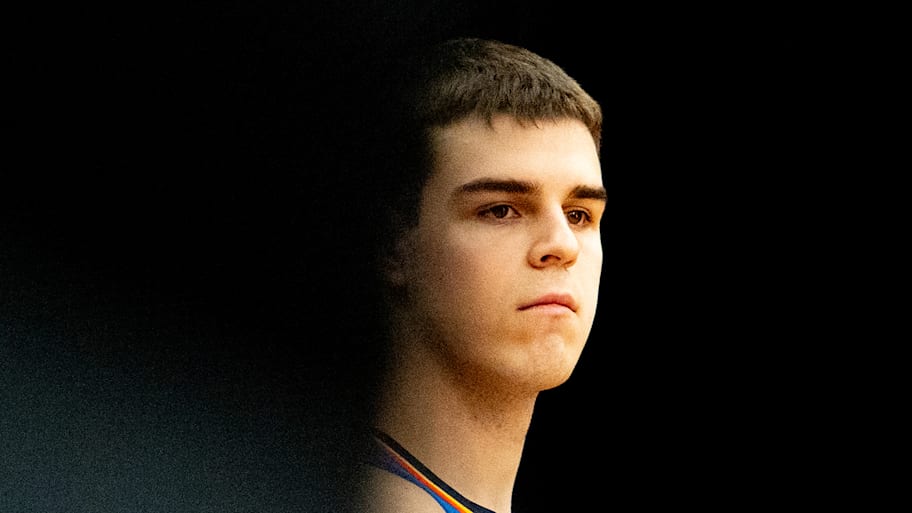
“He’s exciting when you watch him on film,” Daigneault says. “He’s an old soul. He’s way beyond his years, so that bodes really well for him, regardless of where he starts as a player on the court. That stuff translates, and he’s been very impressive with that.”
Holmgren’s career has been plagued by injuries, leading the Thunder to believe the stringy 7' 1" forward is just scratching the surface of his potential. A nasty hip injury cost Holmgren 50 games in 2024–25, robbing him of the strength and conditioning he needed to be at his best. Holmgren shot 43.3% from three in the first quarter this season, when his legs were fresh. In the fourth, that number dipped to 25%.
Oklahoma City will prioritize conditioning with Holmgren this summer. His trainer, Drew Hanlen, has already mapped out a plan to improve his ability to score through contact and become a more versatile three-point shooter. Asked what level he expected Holmgren to rise to next season, Hanlen was succinct: “All-Star.”
It isn’t just Holmgren. In his third season, Williams gave off some Scottie Pippen vibes, emerging as an elite scorer, playmaker and defender. Cason Wallace, 21, is a defensive stopper with a rapidly developing three-point shot. Aaron Wiggins, Jaylin Williams and Isaiah Joe—none of whom is older than 26—played supporting roles this year but have shown flashes of being ready for more.
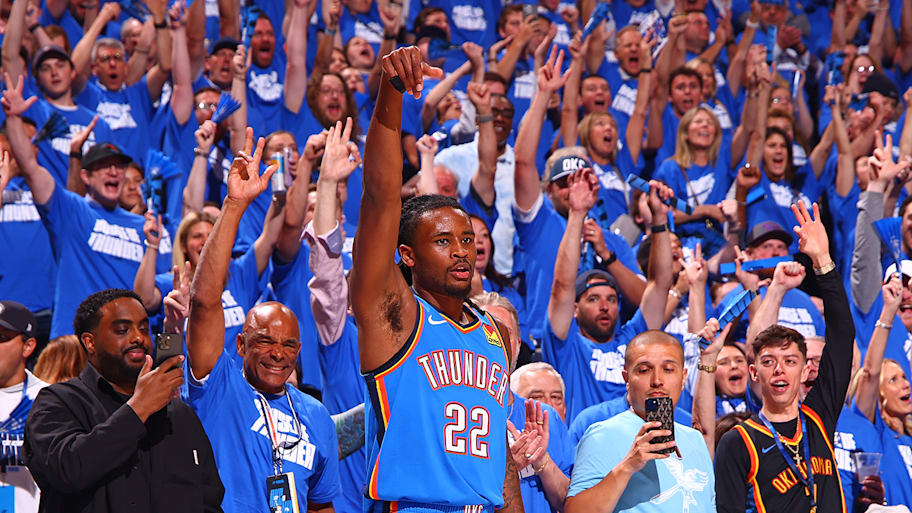
That’s an enormous advantage, says Marks. Most title contenders have had to “play the minimum game,” scouring the market for bargain-basement free agents to flesh out a roster top heavy with expensive talent. “When you do that,” Marks says, “everything has to go perfectly.” The Thunder, with its deep bench of young players and stockpile of picks, don’t have to. “They have the ultimate flexibility,” Marks says. “If a player gets too pricey, they have cheaper options there to replace them.”
In 2012, Presti, fearful of potential luxury tax penalties, balked at offering Harden a four-year, $60 million contract extension, flipped him to Houston and ended the Big Three era before it could really get started. Presti learned from that mistake. The Thunder roster will get expensive—Gilgeous-Alexander is in the middle of a five-year, $172 million contract while Holmgren and Williams are eligible to sign max deals this summer—but it has some built-in flexibility. Several key role players have team options (Hartenstein, Luguentz Dort, Kenrich Williams in 2026, Joe in ’27) that will help the Thunder stay under the second tax apron and avoid the restrictions that come with it.
A decade after one super team disbanded, another has risen in Oklahoma City, one with a runway even longer than the first. After Game 7, the Thunder locker room was strangely quiet. Players held corked champagne bottles, too young to understand how to open them. A tutorial from Caruso, a member of the Lakers’ 2020 title team, didn’t stick. “We’ll get some rest, reset, try to go again next year and see if we can do it again,” cracked Caruso. Even in celebrations, the Thunder are always trying to get better.
This article was originally published on www.si.com as Thunder Aiming to Control Next Era of NBA Superteams.

